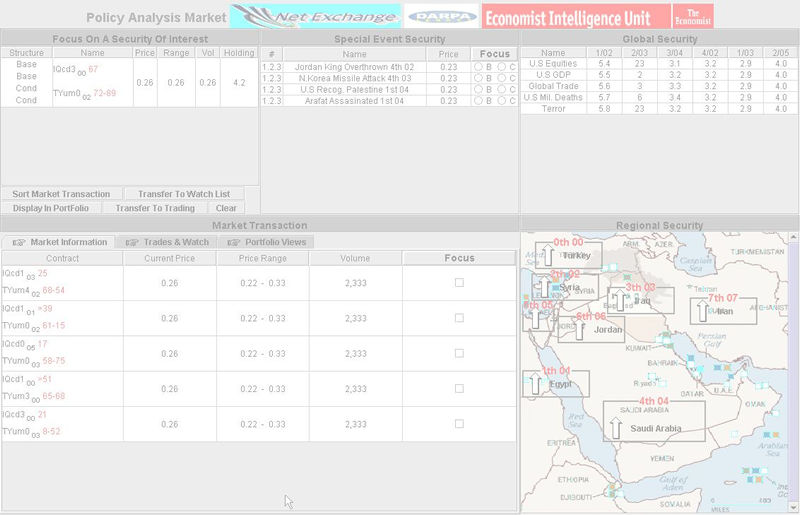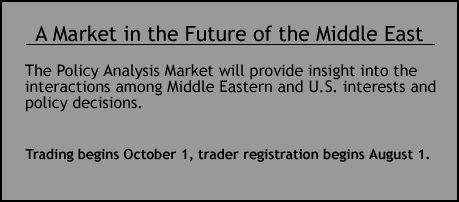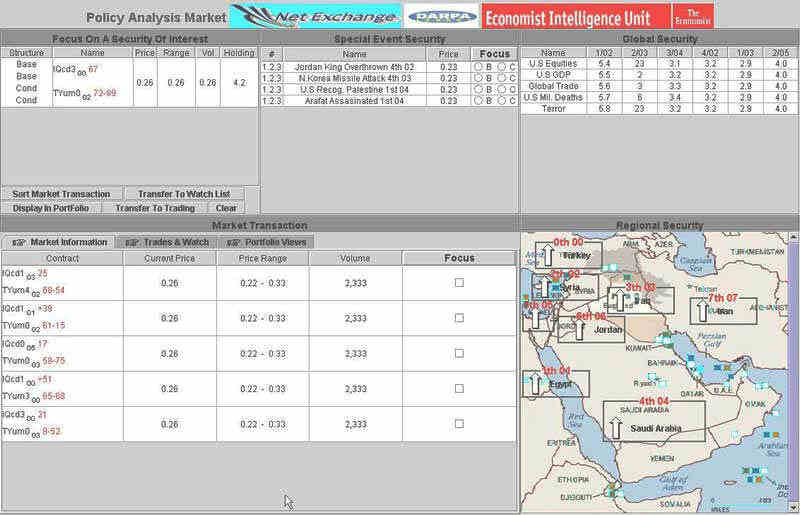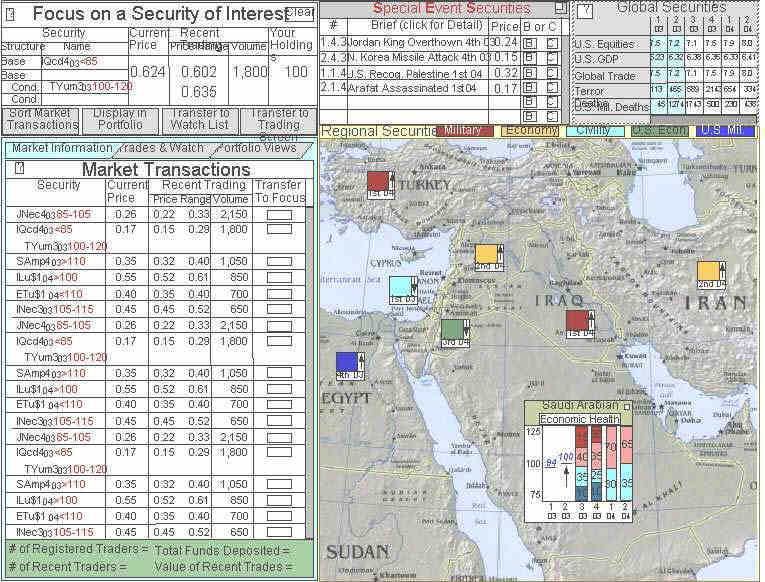Analysts often use prices from various markets as indicators of potential
events. The use of petroleum futures contract prices by analysts of the Middle
East is a classic example. The Policy Analysis Market (PAM) refines this
approach by trading futures contracts that deal with underlying fundamentals
of relevance to the Middle East. Initially, PAM will focus on the economic,
civil, and military futures of Egypt, Jordan, Iran, Iraq, Israel, Saudi Arabia,
Syria, and Turkey and the impact of U.S. involvement with each.
Summary of PAM Futures Contracts
Three types of futures contracts will be offered on PAM:
-
Quarterly contracts based on data indices that track economic health, civil
stability, military disposition, and U.S. economic & military involvement
in Egypt, Iran, Iraq, Israel, Jordan, Saudi Arabia, Syria, and Turkey
-
Quarterly contracts that track global economic and conflict indicators
-
Specific possible events (e.g., U.S. recognition of Palestine in the first
quarter of 2005)
When trading starts on October 1, 2003, there will be contracts of the first
two types that mature at the end of the 4th quarter 2003, 1st 2004, 2nd 2004,
and 3rd 2004. On January 1, 2004, contracts that mature at the end of the
4th quarter 2004 will be issued. In this way, the forward view of PAM will
be maintained at one year.
Contracts of the third type will be issued into PAM
as specific potential events of interest are identified.
Copyright © 2003 Net Exchange. All rights
reserved.
 |
The contracts traded on PAM will be based on objective data and observable
events. These contracts will be valuable because traders who are registered
with PAM will use their money to acquire contracts. A PAM trader who believes
that the price of a specific futures contract under-predicts the future status
of the issue on which it is based can attempt to profit from his belief by
buying the contract. The converse holds for a trader who believes the price
is an over-prediction – she can be a seller of the contract. This price
discovery process, with the prospect of profit and at pain of loss, is at
the core of a market’s predictive power.
The issues represented by PAM contracts may be
interrelated; for example, the economic health of a country may affect civil
stability in the country and the disposition of one country’s military
may affect the disposition of another country’s military. The trading
process at the heart of PAM allows traders to structure combinations of futures
contracts. Such combinations represent predictions about interrelated issues
that the trader has knowledge of and thus may be able to make money on through
PAM. Trading these trader-structured derivatives results in a substantial
refinement in predictive power.
Example of PAM futures and derivatives contracts
 |
The PAM trading interface presents A Market in the Future of the Middle
East. Trading on PAM is placed in the context of the region using a
trading language designed for the fields of policy, security, and risk analysis.
PAM will be active and accessible 24/7 and should prove as engaging as it
is informative.
Copyright © 2003 Net Exchange. All rights reserved.











